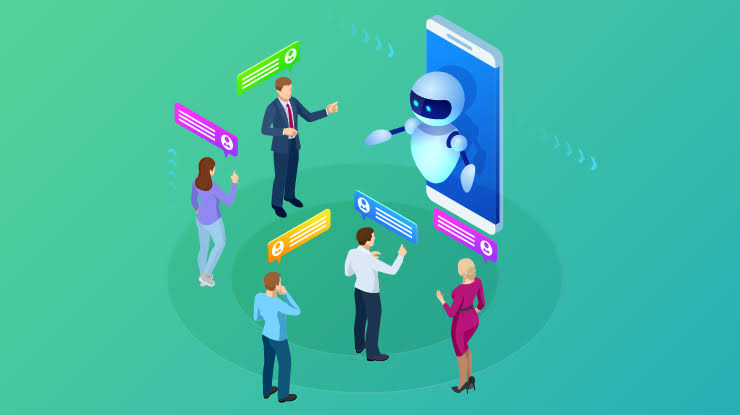Chatbots have become a transformative tool in customer support systems, reshaping how businesses interact with their customers. By leveraging artificial intelligence (AI), natural language processing (NLP), and machine learning, chatbots provide real-time assistance, answer frequently asked questions, and streamline customer interactions. In 2025, with advancements in AI-driven conversational technologies, chatbots are no longer limited to basic automated responses; they now deliver personalized, context-aware, and highly efficient support experiences.
Evolution of Chatbots in Customer Support
The early versions of chatbots were primarily rule-based, responding only to pre-defined questions and commands. These systems lacked the ability to understand complex queries or learn from interactions. However, the integration of AI, particularly large language models, has transformed modern chatbots into sophisticated conversational agents.
Today’s chatbots can interpret customer intent, understand sentiment, and provide proactive solutions. Businesses across industries, from e-commerce to banking, use chatbots as the first point of contact for customer inquiries, significantly reducing wait times and operational costs.
Key Roles of Chatbots in Customer Support
1. 24/7 Availability
One of the biggest advantages of chatbots is their ability to provide round-the-clock support. Unlike human agents, chatbots can operate continuously, ensuring that customers receive immediate responses to their queries regardless of time zones.
2. Instant Response to Common Queries
Chatbots excel at handling frequently asked questions such as order status updates, product details, or troubleshooting basic issues. By automating these tasks, human agents can focus on more complex customer concerns.
3. Personalization and Context Awareness
Modern chatbots utilize data from previous interactions, purchase history, and customer profiles to deliver tailored recommendations and personalized responses. This enhances customer satisfaction by making the support experience feel more human-like.
4. Multi-Channel Integration
Chatbots can be integrated across multiple platforms, including websites, mobile apps, social media channels, and messaging apps like WhatsApp or Facebook Messenger. This ensures a consistent support experience no matter where the customer interacts with the brand.
5. Cost Efficiency
By reducing the workload on customer service teams, chatbots help businesses save operational costs. They minimize the need for large call center teams while maintaining high-quality support standards.
Benefits of Chatbots in Customer Support Systems
- Improved Response Time: Chatbots can process and respond to inquiries instantly, significantly reducing wait times for customers.
- Scalability: Chatbots can handle thousands of queries simultaneously, something that would be impossible for human agents alone.
- Enhanced Data Collection: Interactions with chatbots provide valuable insights into customer preferences, pain points, and behavior patterns.
- Consistent Service: Unlike human agents, chatbots provide consistent and error-free responses based on pre-trained data and guidelines.
- Customer Engagement: Advanced chatbots can engage customers in interactive conversations, offering upselling or cross-selling opportunities.
Challenges in Chatbot Implementation
While chatbots bring numerous benefits, they are not without limitations. A major challenge is ensuring that chatbots can accurately understand complex or ambiguous customer queries. Misinterpretation can lead to frustration and dissatisfaction.
Another challenge is the balance between automation and the human touch. Customers may prefer speaking to a real person for sensitive issues. Businesses need to implement seamless escalation systems where chatbots can hand over conversations to human agents when necessary.
Future of Chatbots in Customer Support
The future of chatbots lies in the integration of advanced AI technologies like generative AI, voice assistants, and predictive analytics. By 2025, many companies are investing in AI-powered conversational systems capable of emotional intelligence, recognizing tone and sentiment to adapt their responses accordingly.
Voice-enabled chatbots are also becoming popular, particularly with the rise of smart devices and voice assistants like Alexa or Google Assistant. These advancements will further blur the lines between human and machine interaction, delivering faster and more intuitive support.
Conclusion
Chatbots have evolved into essential components of modern customer support systems. They enhance efficiency, reduce operational costs, and improve customer experiences through instant, personalized interactions. While challenges remain, the integration of advanced AI and NLP technologies promises to create even more intelligent, empathetic, and proactive chatbot systems in the coming years.




Chatbots offer significant benefits in customer support by improving efficiency and personalization, but challenges like accurately understanding complex queries and balancing automation with human interaction remain. Effective chatbot systems require seamless escalation to human agents for sensitive issues to avoid customer frustration.
Chat box makes for efficiency in customer service